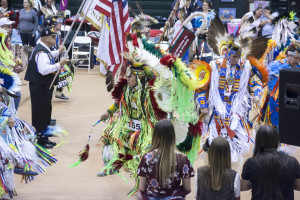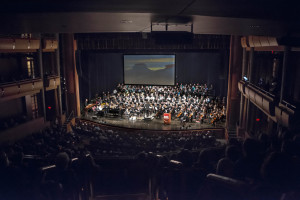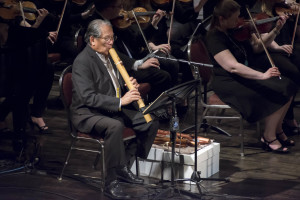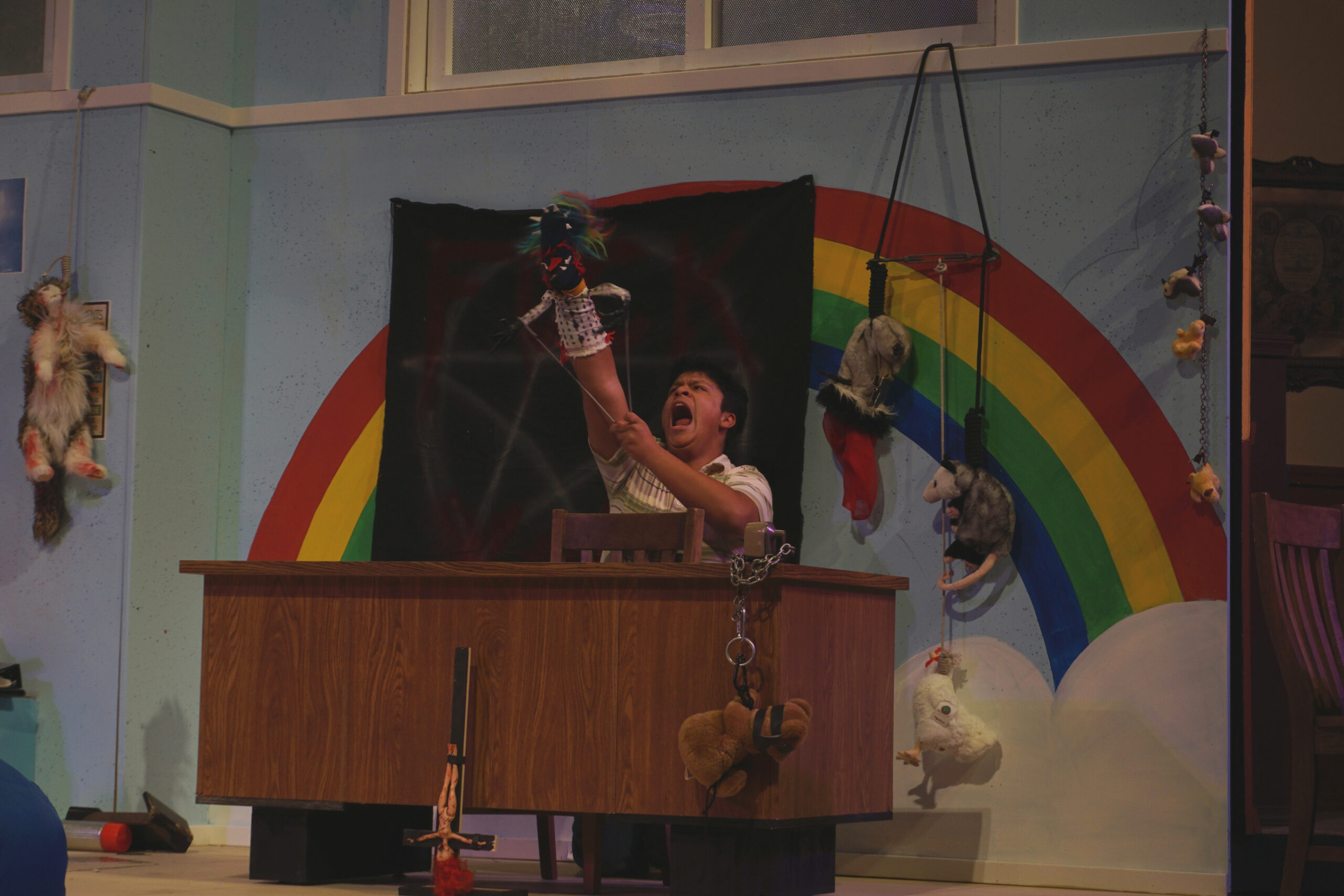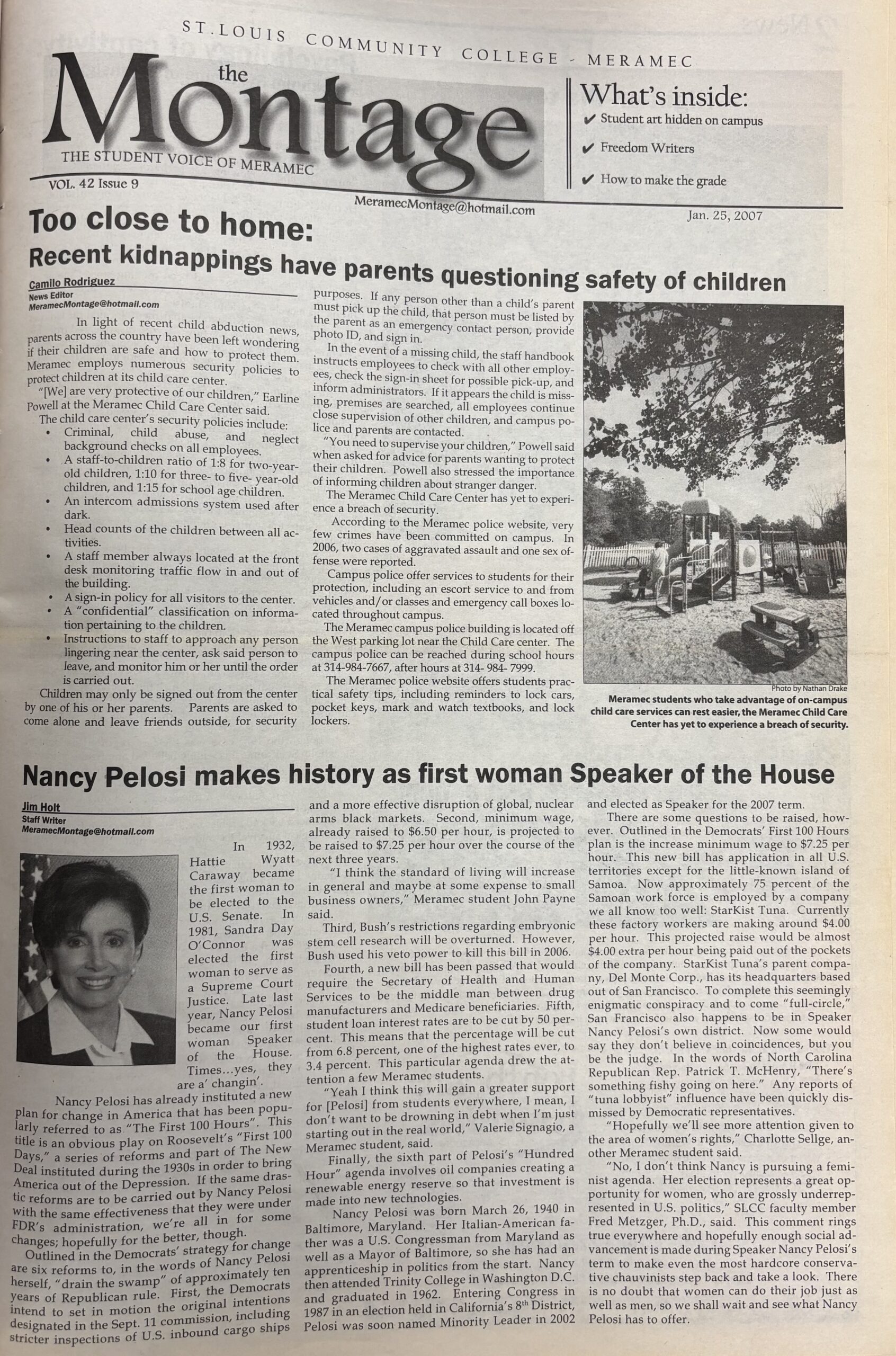Not a single seat was empty in the University of Missouri St. Louis’ Touhill Performing Arts Center on Monday, April 23.
BY: Monica Obradovic
Staff Writer
“Come, walk with me,” implores words projected on a screen. Feel the rhythm of the music. Know the beat of the drums. This is Chaco canyon, a sanctuary for Native American culture. It is also the inspiration for Meramec music 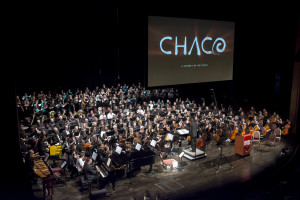 director Gary Gackstatter’s sixth symphony.
director Gary Gackstatter’s sixth symphony.
Not a single seat was empty in the University of Missouri St. Louis’ Touhill Performing Arts Center on Monday, April 23, when the Meramec and UMSL music departments came together to perform “Symphony Chaco: A Journey of the Spirit.”
Symphony Chaco is the culmination of years of preparation on the part of Gackstatter, who attributes the symphony’s beginning to all of
his experiences.
“It took all my life,” he said. “It’s all a journey…The projects I’ve done before over the years brought me to a place where I needed this to grow as a teacher, composer, musician and person.”
Symphony Chaco is music of Native American culture, not about it. The music incorporates rhythms and instruments whose sounds have not reverberated off the walls of Missouri in over a hundred years. For UMSL and STLCC student musicians, the unconventional style of music provided a memorable and enjoyable experience.
“It was a joy for UMSL students to be able to collaborate with Meramec… It’s a very exciting thing to get to work with people you don’t normally get to create with,” said Jim Henry, Ph. D and choral director of UMSL. 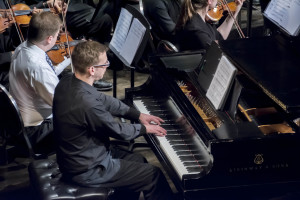
Along with the majority of the concert attendees, Henry had not heard of Chaco Canyon before learning about Gackstatter’s symphony.
“Gary visited Chaco canyon which inspired him to write music. For us, it was the other way around. The music inspired us to get to know Chaco canyon,” said Henry.
Similar to the Native American ideology that everything is connected, Gackstatter’s Symphony Chaco is more than the presence of an orchestra and a conductor. Symphony Chaco was a community effort and brought together multiple persons, cultures, and artforms. A video played through the duration of the concert displaying student-made graphics to go along with the music. Photography student works were displayed in the venue’s lobby along with some of Gackstatter’s own ink artwork.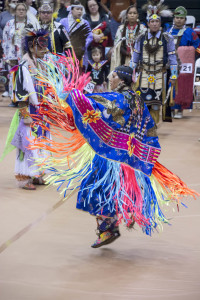
There were multiple persons whose work was integral to the production of Symphony Chaco, perhaps most notably ten-time Grammy award nominee R. Carlos Nakai.
A flute-player of Navajo heritage, Nakai contributed his instrument to the orchestra, conducted by Gackstatter.
“The concert adds to my experiences as a performer of the Native American flute and of integrating the discipline of western European music into the capabilities of this instrument,”
said Nakai.
The musician flew in from Texas to play flute in the concert. However, Gackstatter was not new to Nakai’s music, having been a fan for 30 years. Nakai’s sound has been in his spirit for a long time, he said. Gackstatter also received suggestions from Nakai as he wrote Symphony Chaco.
“Our culture is totally distracted today, from the time we get up and the time we go to bed,” said Gackstatter.” I wanted to remind them of that Native American idea that you do not waste time. That you’re connected to nature, and you’re connected to each other, because everything
is connected.”